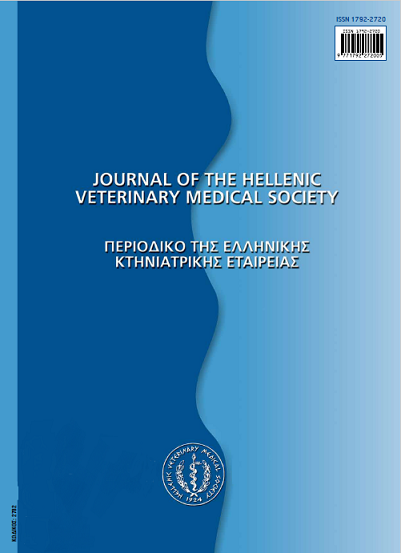Παρουσία των παθογόνων βακτηρίων στη «Γραβιέρα Κρήτης» που παρασκευάζεται από νωπό και παστεριωμένο γάλα

Περίληψη
Για τη μελέτη της υγιεινής κατάστασης της «Γραβιέρας Κρήτης» έγιναν σε ένα παραδοσιακό τυροκομείο της Κρήτης, με τον παραδοσιακό τρόπο, πειραματικές τυροκομήσεις από νωπό και παστεριωμένο γάλα. Εξετάσθηκαν 42 δείγματα από τα διάφορα στάδια της διαδικασίας παραγωγής για την παρουσία Coliforms, Escherichia coli, Staphylococcus aureus Listeria monocytogenes, Salmonellaspp, Escherichia coli 0157:H7 και VRE(Vancomycin Resistant Enterococci). Όλα τα δείγματα ήταν αρνητικά για την παρουσία Salmonella spp, Escherichia coli 0157:H7 και VRE. Οι πληθυσμοί των Coliforms και της Escherìchia coli πριν από το στάδιο της αναθέρμανσης της τυρομάζας, ήταν 3-3,5 log10MPN/g υψηλότεροι στα τυριά που παρασκευάστηκαν με νωπό γάλα σε σχέση με εκείνα που παρασκευάστηκαν από παστεριωμένο γάλα. Οι πληθυσμοί και τωνδυο προηγούμενων βακτηρίων μειώθηκαν απότομα κατά τη διάρκεια της περιόδου ωρίμανσης του τυριού και στους δύο τύπους τυριών. Η Listeria monocytogenes, τύπος 4b απομονώθηκε στα τυριά δύο πειραματικών τυροκομήσεων και επιβίωσε σε αυτά μέχρι το στάδιο παραγωγής μετά την αλάτιση. Στα τυριά αυτά μετά το στάδιο της αλάτισης όπως και σε όλα τα υπόλοιπα παρέμεινε σε μη ανιχνεύσιμους αριθμούς. Στο τέλος της περιόδου ωρίμανσης όλα τα βακτήρια που εξετάσθηκαν είχαν μειωθεί σε ασφαλή για τον καταναλωτή επίπεδα.
Λεπτομέρειες άρθρου
- Πώς να δημιουργήσετε Αναφορές
-
SAMOURIS (Γ. ΣΑΜΟΥΡΗΣ) G., ZDRAGAS (Α. ΖΔΡΑΓΚΑΣ) A., VAFEAS (Γ. ΒΑΦΕΑΣ) G., & BELIBASAKI (Σ. ΜΠΕΛΙΜΠΑΣΑΚΗ) S. (2017). Παρουσία των παθογόνων βακτηρίων στη «Γραβιέρα Κρήτης» που παρασκευάζεται από νωπό και παστεριωμένο γάλα. Περιοδικό της Ελληνικής Κτηνιατρικής Εταιρείας, 62(3), 205–211. https://doi.org/10.12681/jhvms.14850
- Τεύχος
- Τόμ. 62 Αρ. 3 (2011)
- Ενότητα
- Research Articles
Οι συγγραφείς των άρθρων που δημοσιεύονται στο περιοδικό διατηρούν τα δικαιώματα πνευματικής ιδιοκτησίας επί των άρθρων τους, δίνοντας στο περιοδικό το δικαίωμα της πρώτης δημοσίευσης.
Άρθρα που δημοσιεύονται στο περιοδικό διατίθενται με άδεια Creative Commons 4.0 Non Commercial και σύμφωνα με την άδεια μπορούν να χρησιμοποιούνται ελεύθερα, με αναφορά στο/στη συγγραφέα και στην πρώτη δημοσίευση για μη κερδοσκοπικούς σκοπούς.
Οι συγγραφείς μπορούν να καταθέσουν το άρθρο σε ιδρυματικό ή άλλο αποθετήριο ή/και να το δημοσιεύσουν σε άλλη έκδοση, με υποχρεωτική την αναφορά πρώτης δημοσίευσης στο J Hellenic Vet Med Soc
Οι συγγραφείς ενθαρρύνονται να καταθέσουν σε αποθετήριο ή να δημοσιεύσουν την εργασία τους στο διαδίκτυο πριν ή κατά τη διαδικασία υποβολής και αξιολόγησής της.








